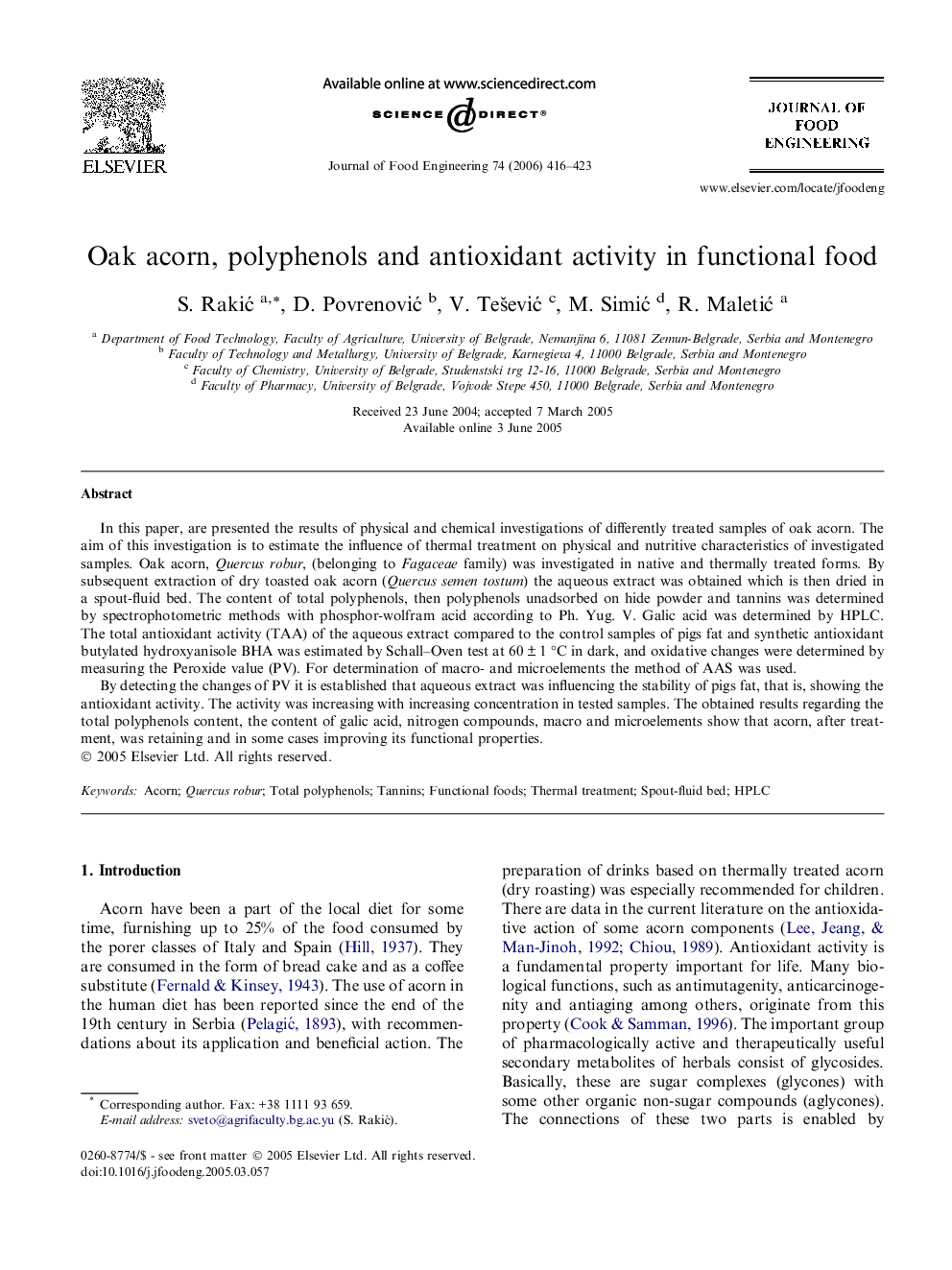| Article ID | Journal | Published Year | Pages | File Type |
|---|---|---|---|---|
| 226440 | Journal of Food Engineering | 2006 | 8 Pages |
In this paper, are presented the results of physical and chemical investigations of differently treated samples of oak acorn. The aim of this investigation is to estimate the influence of thermal treatment on physical and nutritive characteristics of investigated samples. Oak acorn, Quercus robur, (belonging to Fagaceae family) was investigated in native and thermally treated forms. By subsequent extraction of dry toasted oak acorn (Quercus semen tostum) the aqueous extract was obtained which is then dried in a spout-fluid bed. The content of total polyphenols, then polyphenols unadsorbed on hide powder and tannins was determined by spectrophotometric methods with phosphor-wolfram acid according to Ph. Yug. V. Galic acid was determined by HPLC. The total antioxidant activity (TAA) of the aqueous extract compared to the control samples of pigs fat and synthetic antioxidant butylated hydroxyanisole BHA was estimated by Schall–Oven test at 60 ± 1 °C in dark, and oxidative changes were determined by measuring the Peroxide value (PV). For determination of macro- and microelements the method of AAS was used.By detecting the changes of PV it is established that aqueous extract was influencing the stability of pigs fat, that is, showing the antioxidant activity. The activity was increasing with increasing concentration in tested samples. The obtained results regarding the total polyphenols content, the content of galic acid, nitrogen compounds, macro and microelements show that acorn, after treatment, was retaining and in some cases improving its functional properties.
